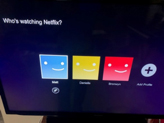“On TV And Video” is a column exploring opportunities and challenges in advanced TV and video.
Today’s column is written by Matt Prohaska, principal and CEO at Prohaska Consulting.
When I was 24, I resigned from a great job at BBDO to become the first New York salesperson at upstart media company CNET. When people asked why, my standard line was that I was tired of watching Peter Jennings on ABC’s World News Tonight and seeing menopause ads.
I was not in the target audience for menopause, and at the time, neither was my mom. I thought this internet thing might eventually provide better ways to personalize ads and remove some waste.
Today, there are more than 70 million US households with addressable TV capabilities, and US addressable spend is expected to reach $3 billion in 2019 – all of which is far beyond the early test-budget phase.
We can see the promise of addressable TV but it has not become a reality to the point where it is the habitual, default way of transacting.
To see what needs to shift, I revert to the same three Ts that describe any aspect of change in our industry: tech, targets and talent.
Tech
There are still some hardware and software hurdles to leap before addressable TV is closer to a web browsing experience today. Many of these “smart” TVs need to get smarter by allowing for updated apps in the same way as our phones, but at least the capability is there.
The planning software for broadcasters’ operations teams has still not fully been updated or changed to make it easy for sales teams to measure reach and frequency or manage inventory at the audience and program/daypart level.
But there will continue to be advances in both areas, and valuable human beings are making up for the lack of streamlined process and scale by providing solid forecasts and delivery.
AdExchanger Daily
Get our editors’ roundup delivered to your inbox every weekday.
Daily Roundup
Targets
The data itself is advancing quickly on two fronts. Probabilistic targeting both on TV and cross-screen is advancing quickly, with several firms now touting billions of devices connected with accuracy approaching or exceeding 90%, with huge strides made in just the last couple of years.
And deterministic targeting continues to become a more comfortable method for the audience itself, so despite one particular global social publisher’s/platform’s ongoing issues with data privacy and security, other firms like Hulu, Netflix and even Twitter have proven that audiences can be built at scale, showcasing the value exchange of unique data sharing with a more personalized and better content and advertising experience.
Our family’s Netflix log-in screen: Exhibit A for the benefits of deterministic targeting.

Talent
As always, this is the hardest area to change and will take the longest after tech and targets are fully advanced. Changing behavior of leading buyers and sellers is always more challenging when teaching new habits to seasoned vets that have done quite well in their current linear world during the past five to 35 years.
We have two different types of TV buyers and sellers today: traditional linear buyers and addressable/advanced/programmatic buyers. Eventually, all TV advertising will be transacted by one team on each side, but unfortunately, those teammates and skillsets are still a little too much “oil and vinegar” instead of “chocolate and peanut butter.”
Market forces and client demand will drive further integration to where the cross-team teaching and learning will usher in a new era of executives with the power and knowledge to drive cross-screen transactions at a large scale. It is exciting to see those individuals already asserting themselves in large, important organizations and given empowerment to execute and teach their colleagues.
Until the talent evolves, all the tech and targeting in the world won’t result in the client and consumer benefits that are possible with addressable TV.
The future of identity
TV is the last major piece of the digital media puzzle we need to fall in place to unlock the broader promise of omnichannel identity. We currently live in two media and marketing worlds where our identity is either very known, by marketers and publishers, or our identity is well-guessed.
I predict that by the end of 2025, most of today’s major media will be fully-deterministic and fully opt-in across all screens. Before then, we need to get through a couple of pendulum swings, like the understandable consumer blowback of data abuse, leading to real concerns about how our data is used or misused. And we need the next generation – consumers, viewers, readers and real people – to become more comfortable with personalization in general.
Several studies after last year’s holiday shopping season showed shoppers increasingly wanting better personalization, with the sentiment being, “Why send emails showing me generic ads for the top handbag you retailers need to push when you’ve known me for seven years and know better than most what I’d want to buy immediately?”
The day is coming when the benefits of personalization for content and marketing messages will outweigh the concerns about sharing that data, and most of us will opt in. But until we have 100% scale of deterministic capabilities, marketers and publishers will need to stitch probabilistic data together and leverage onboarding services to gain their efficiencies.
How long until all of TV, all that we call “digital,” all of DOOH and all media is deterministic? I can’t wait until we’re there.
Follow Matt Prohaska (@mattprohaska), Prohaska Consulting (@TeamProhaska) and AdExchanger (@adexchanger) on Twitter.













